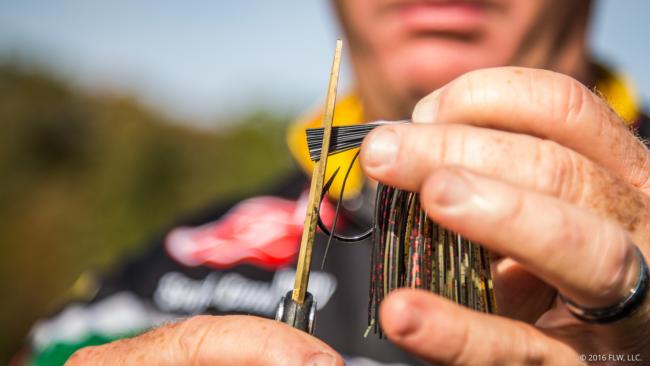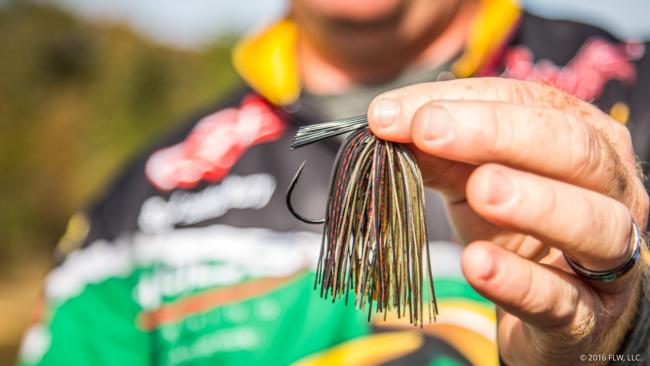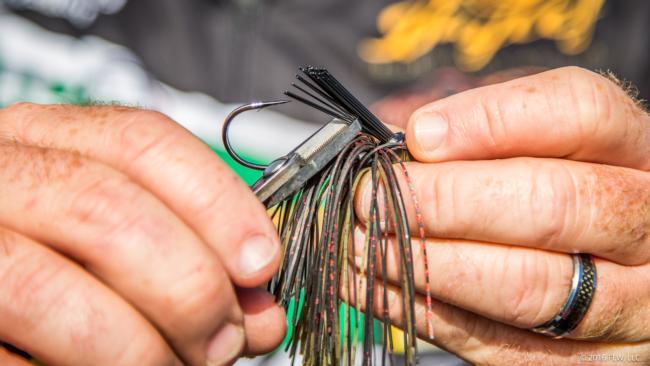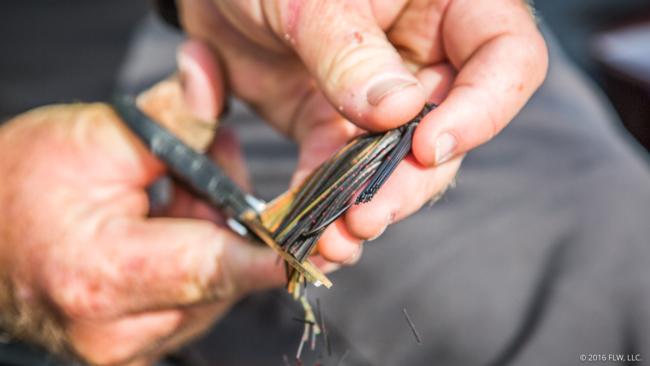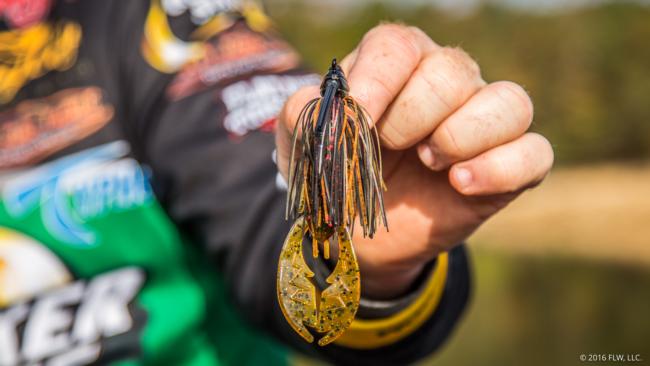How Scott Canterbury Readies a Jig
The Alabama pro loves fishing a jig, but even the best jigs need a little tweaking
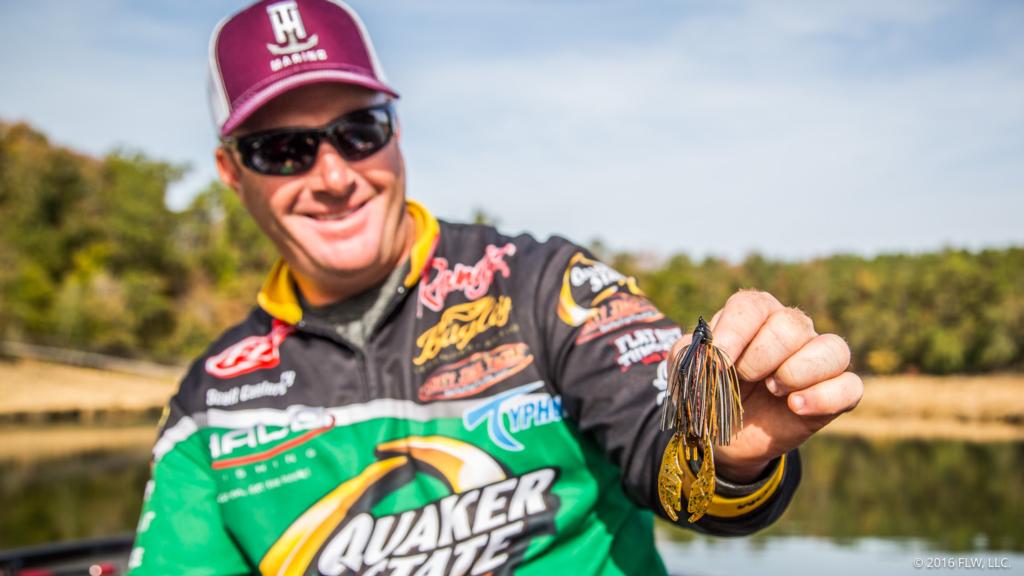
Scott “Hammerbury” Canterbury loves fishing a jig. Raised up around Guntersville, Eufaula and on the Coosa River, the Alabama pro is more expert than most when it comes to getting the max out of any given jig. He’s even got his own jig, the Dirty Jigs Scott Canterbury Flippin’ Jig, which factored into his Walmart FLW Tour win on Beaver Lake and is a fine multi-purpose jig straight out of the pack. Nonetheless, Canterbury makes a few tweaks to nearly every jig before he even ties it on. What follows will let you rig a jig like Canterbury.
Angling the brush guard
The first thing Canterbury modifies on any jig is the brush guard. His first step is fairly universal: He uses very sharp scissors to cut off the top of the brush guard at an angle so the top is roughly parallel to the top of the hook. Depending on the jig, he’ll shorten the guard some, but never so much that the guard won’t cover the point of the hook when it is pressed down.
“With it [the brush guard] sticking up real high, if a fish’s mouth hits the top it won’t get it as deep in it’s mouth. That’s the main thing,” says Canterbury.
Thinning the brush guard
Depending on the cover he’s fishing and the thickness of the brush guard on his jig, Canterbury also likes to trim away a few strands of the guard to help even more with hooksets.
“If I’m not fishing real thick cover, I’ll trim some of the front of the weed guard off [flush at the head] to make it better on hooksets,” says Canterbury. “If I’m fishing thick cover and I want to take away some of the weed guard but keep it stiff, I’ll cut away some of the back but leave it about 1/2 inch up. It’ll make it have fewer strands, but it’ll be stiffer than trimming from the front.”
Canterbury uses a small pair of clippers to make the adjustments.
Trimming the skirt
Trimming the skirt of a jig is one of the most common ways to modify a jig, and Canterbury follows a proven formula.
“Most of the time I trim my skirt up a little bit,” says Canterbury. “I want it bulky, but I want it compact. If I’m fishing Santee Cooper or Eufaula, or somewhere where there’s a bunch of really big fish, I’ll leave it bulky. But most places that we fish I trim it up to make it a little more compact.”
Canterbury usually starts by trimming the skirt with a pair of scissors about 1/4 inch past the hook. Sometimes, if he’s trying to imitate bluegills instead of crayfish, Canterbury will cut at an angle up the sides of the skirt a little bit to give the back almost a triangle shape in an effort to better imitate the baitfish.
“I don’t vary it a whole lot,” says Canterbury. “I used to tie all my own jigs, and when I got through tying them I’d cut them all off below the hook and then put them in the box.”
Finishing adjustments
Once the skirt and the brush guard are trimmed, Canterbury is satisfied with his jig. But, for some jigs, he’ll make one final adjustment, grabbing a pair of pliers and bending the hook out ever so slightly to increase his hookup ratio even more. After that, the last step is to pop a trailer on it (often a NetBait Paca Craw in Canterbury’s case) and go fishing.
